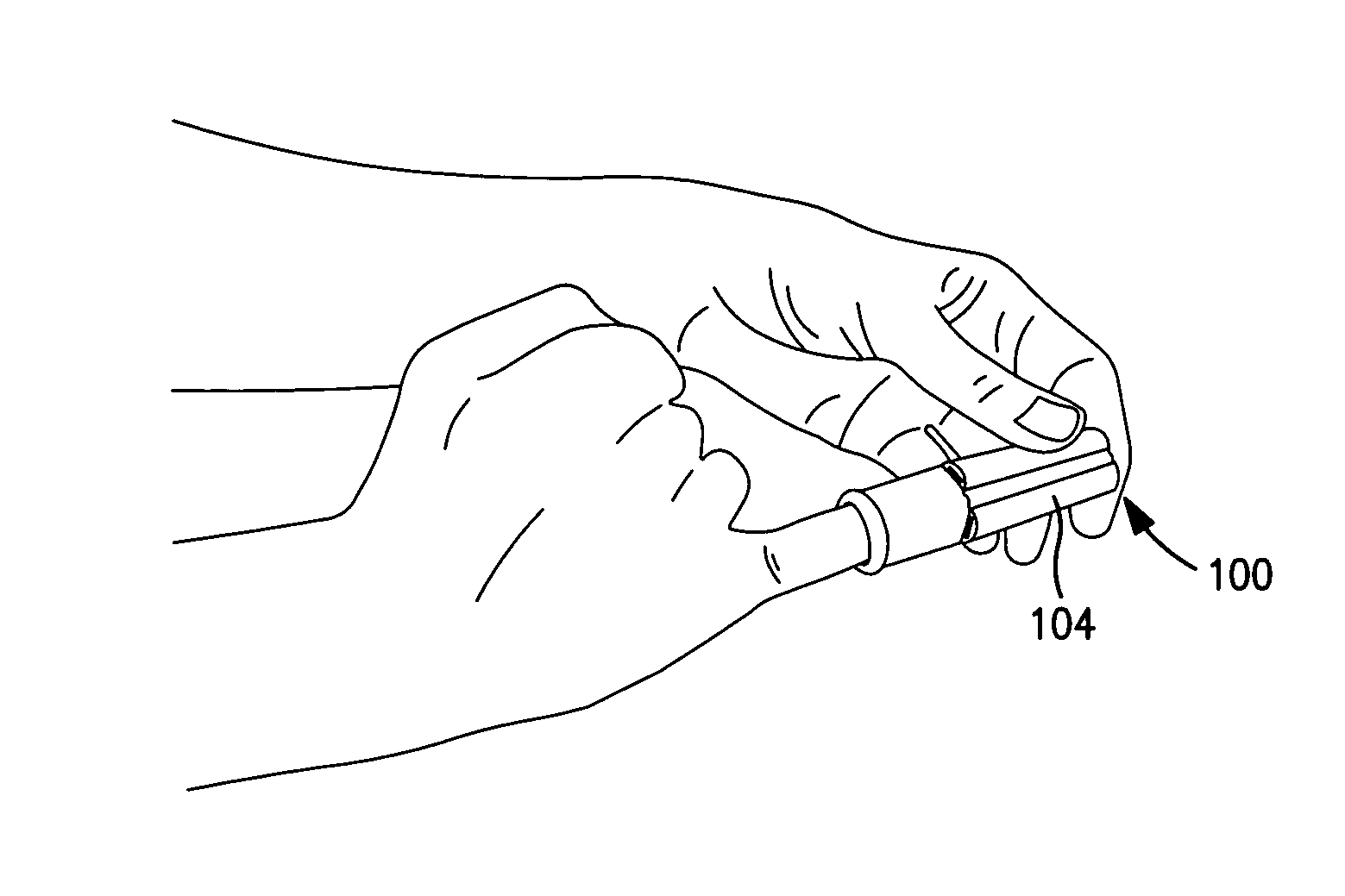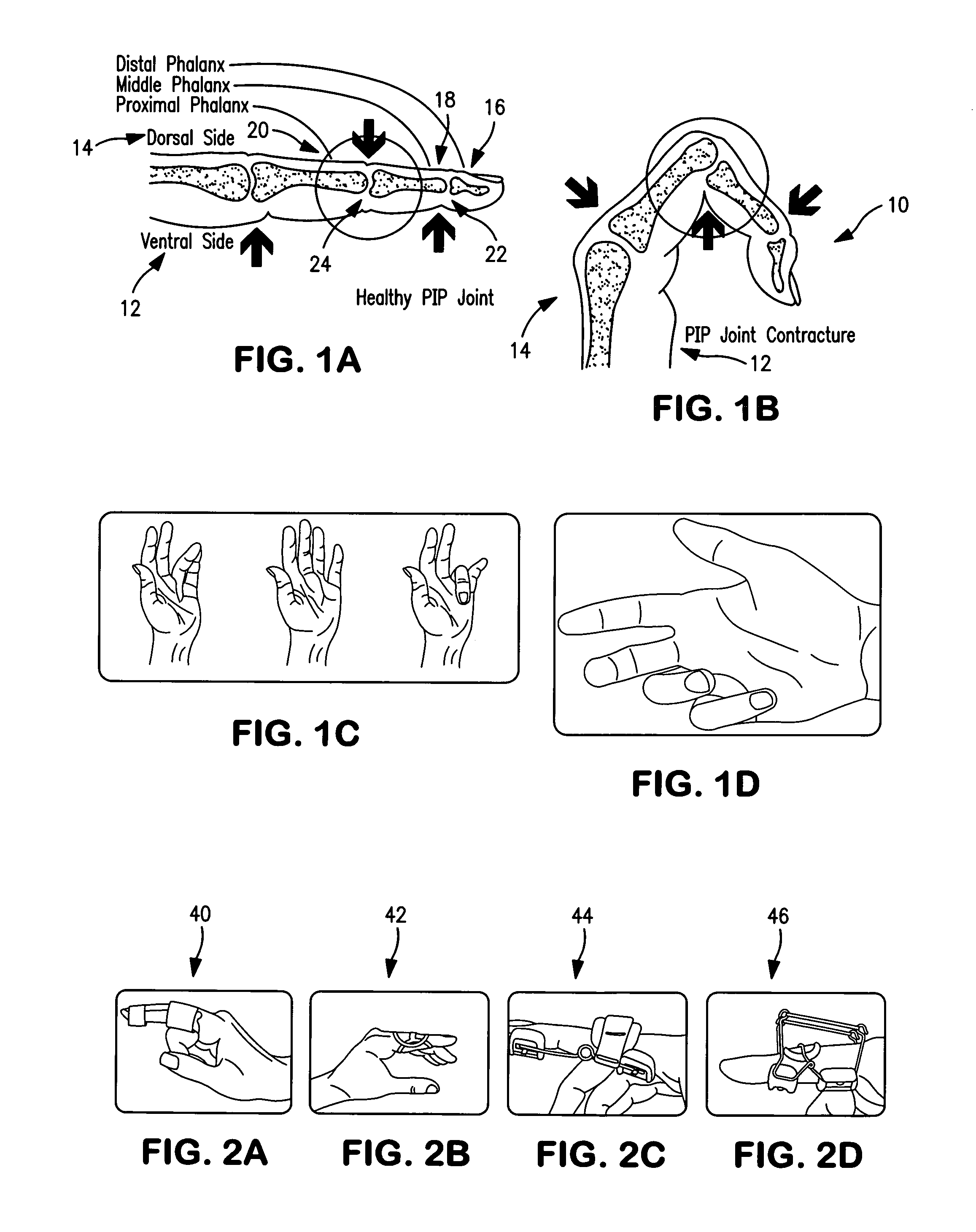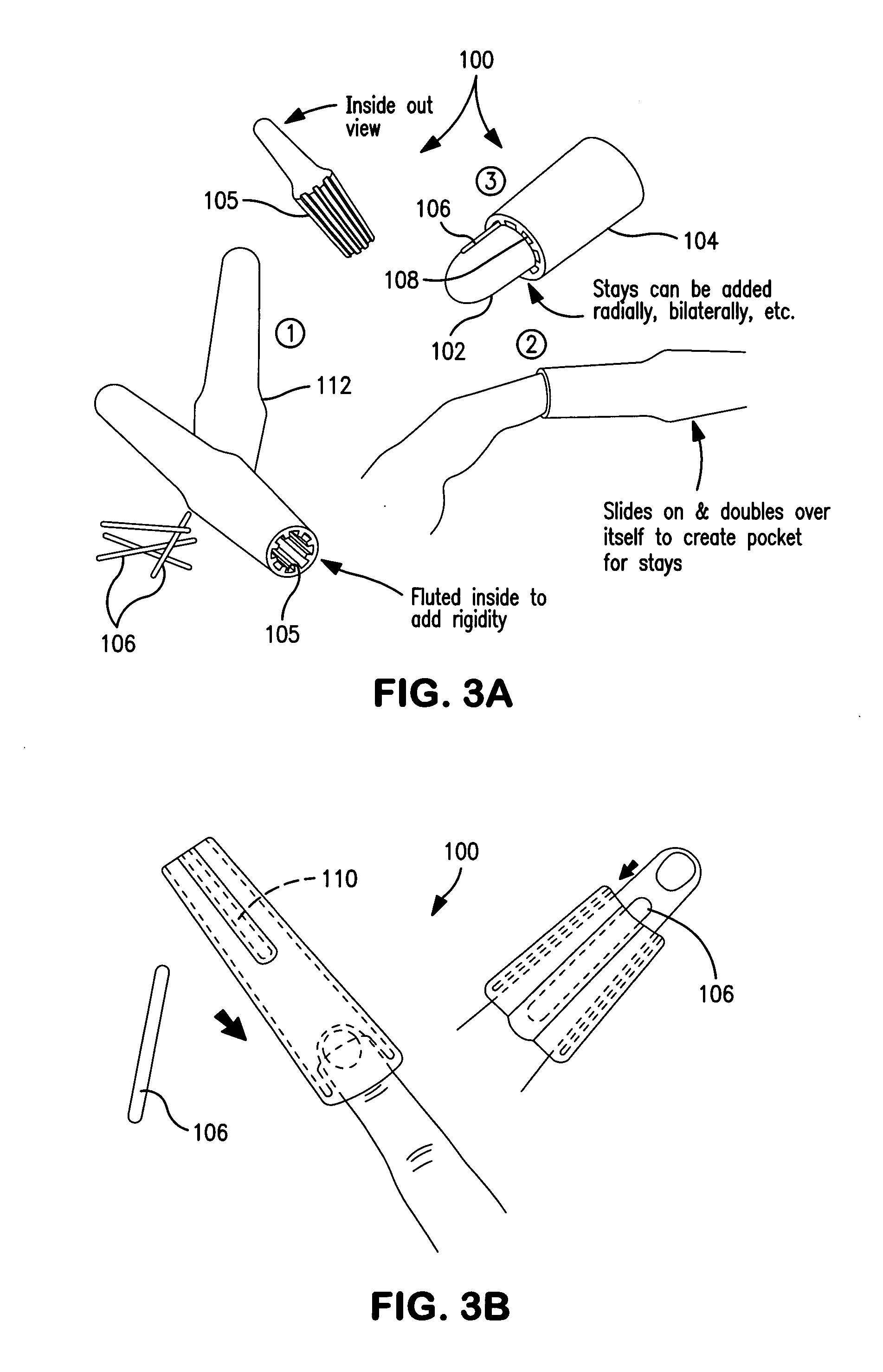Splint for treatment of musculoskeletal injury of the hand
a musculoskeletal injury and hand technology, applied in the field of splints, can solve the problems of low recovery rate, significant functional limitations and pain, and none generally having very good patient outcomes, and achieve the effects of increasing the range of motion of the pip joint, restoring the force of the finger, and encouraging higher adherence rates
- Summary
- Abstract
- Description
- Claims
- Application Information
AI Technical Summary
Benefits of technology
Problems solved by technology
Method used
Image
Examples
Embodiment Construction
[0027]Referring now to the drawings wherein like reference numerals designate corresponding parts throughout the several views, FIGS. 3A-11 are views illustrative of splints according to the invention for treatment of musculoskeletal injury of a hand, and manufacturing and use methods thereof.
[0028]Referring to FIGS. 3A-3D, according to an embodiment of the invention, a splint 100 is generally formed of a soft rubber sleeve which may double over itself easily when the finger is inserted so as to alleviate the strain of trying to stretch or roll the splint over the affected joint. Splint 100 may generally include first and second portions forming inner and outer splint layers 102, 104, with outer layer 104 being fluted at 105 in a generally longitudinal direction for adding rigidity to the splint. Additional rigidity may be added by means of stays 106 (e.g. battens) insertable in cavities 108 formed between inner and outer layers 102, 104 for the FIG. 3A embodiment, and within pre-fo...
PUM
 Login to View More
Login to View More Abstract
Description
Claims
Application Information
 Login to View More
Login to View More - R&D
- Intellectual Property
- Life Sciences
- Materials
- Tech Scout
- Unparalleled Data Quality
- Higher Quality Content
- 60% Fewer Hallucinations
Browse by: Latest US Patents, China's latest patents, Technical Efficacy Thesaurus, Application Domain, Technology Topic, Popular Technical Reports.
© 2025 PatSnap. All rights reserved.Legal|Privacy policy|Modern Slavery Act Transparency Statement|Sitemap|About US| Contact US: help@patsnap.com



